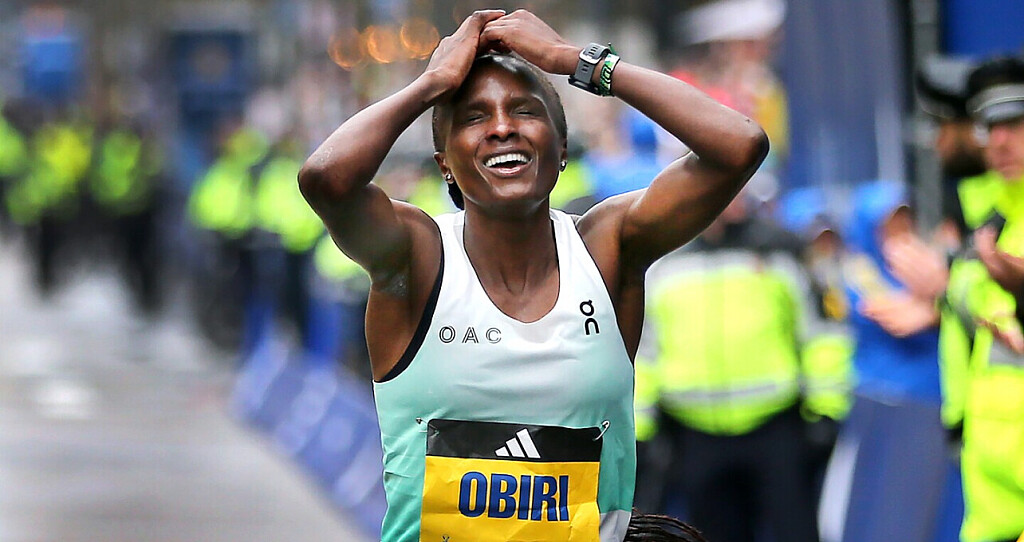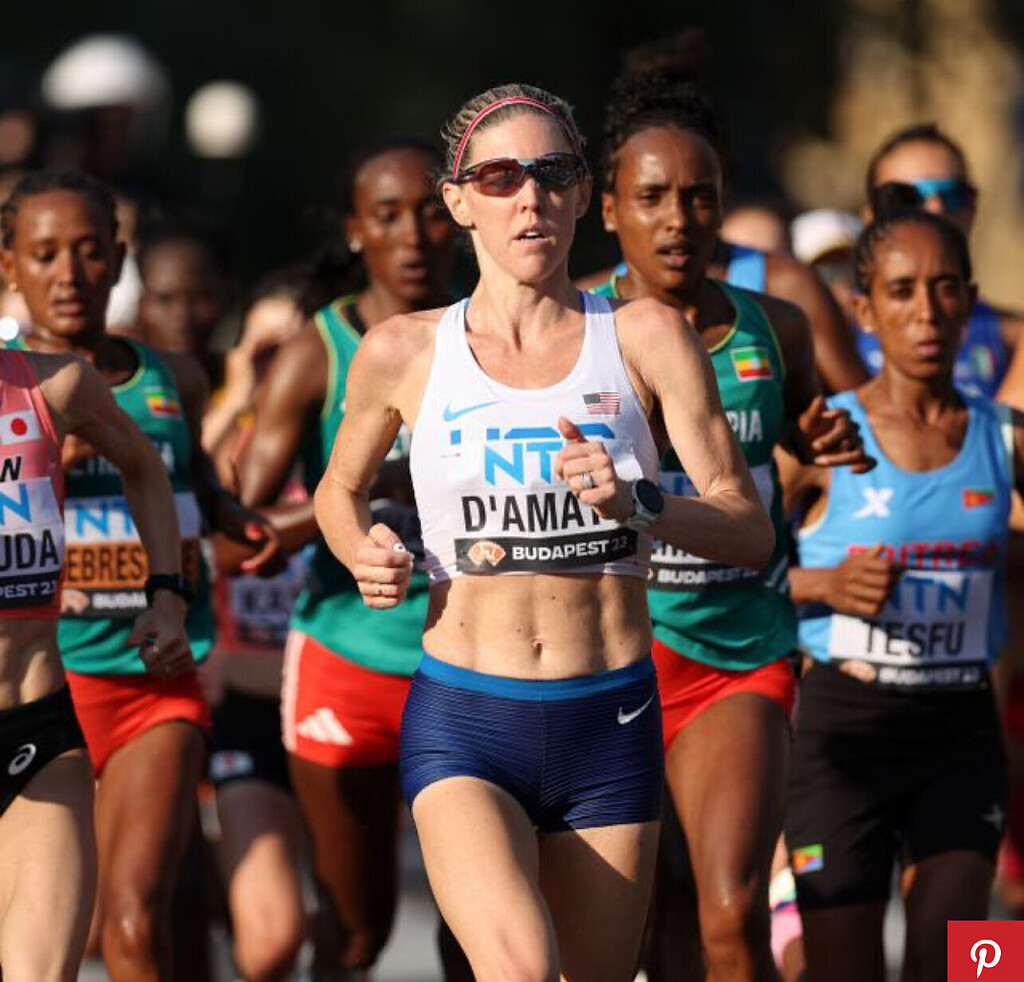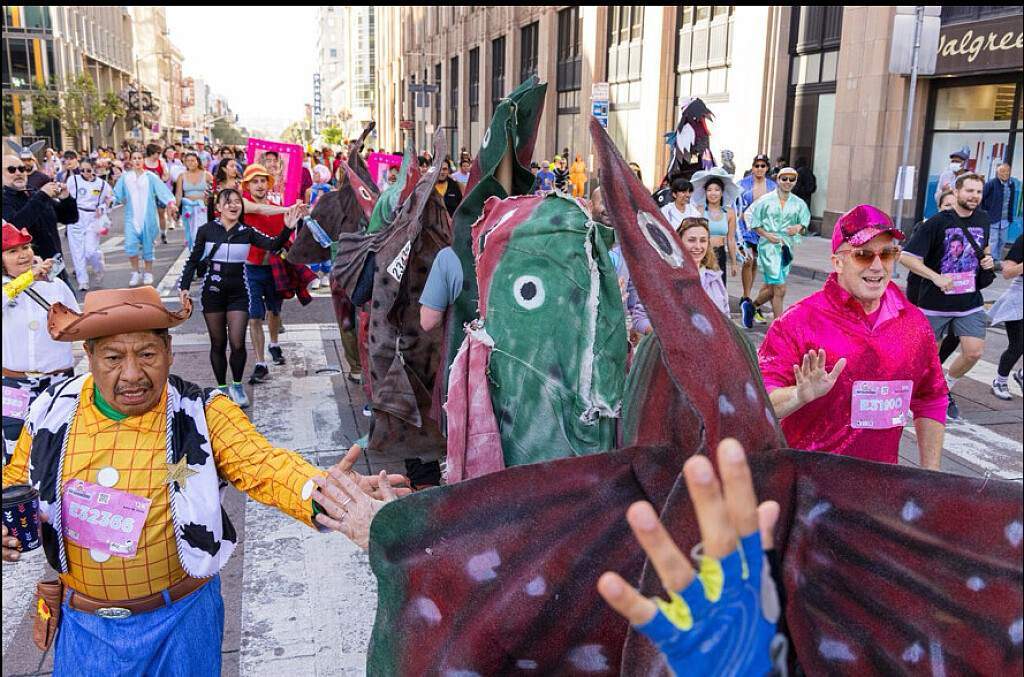Running News Daily
Running News Daily is edited by Bob Anderson. Send your news items to bob@mybestruns.com Advertising opportunities available. Train the Kenyan Way at KATA Kenya and Portugal owned and operated by Bob Anderson. Be sure to catch our movie A Long Run the movie KATA Running Camps and KATA Potato Farms - 31 now open in Kenya! https://kata.ke/
Index to Daily Posts · Sign Up For Updates · Run The World Feed
Articles tagged #Bobbi Gibb
Today's Running News
Hellen Obiri’s Pursuit of a Historic Three-Peat at the Boston Marathon
As the 2025 Boston Marathon approaches on April 21, Kenya’s Hellen Obiri stands on the brink of making history. With victories in 2023 and 2024, Obiri aims to secure her third consecutive win, a feat that would place her among an elite group of women who have achieved a “three-peat” at Boston.
From Track Star to Marathon Champion
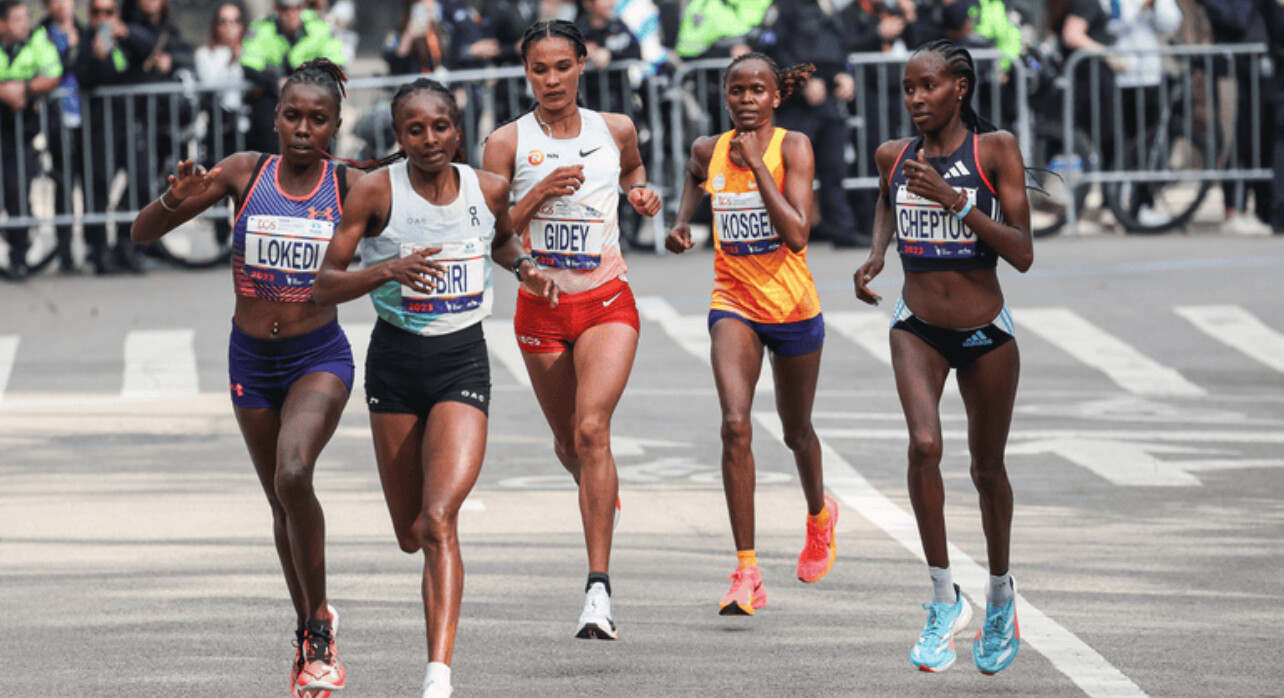
Born on December 13, 1989, in Kisii, Kenya, Hellen Obiri began her athletic career specializing in middle- and long-distance track events. She is the only woman to have won world titles in indoor track, outdoor track, and cross country. Obiri is a two-time Olympic silver medalist in the 5,000 meters (2016 Rio and 2020 Tokyo) and has multiple World Championship medals to her name.
In 2022, Obiri transitioned to road racing, making an immediate impact by winning the 2023 Boston Marathon in her second marathon attempt. She defended her title in 2024, showcasing her versatility and endurance.
The Exclusive Club of Boston Marathon Three-Peaters
Achieving three consecutive victories at the Boston Marathon is a rare accomplishment. In the women’s open division, only four athletes have done so:
• Bobbi Gibb (1966–1968)
• Sara Mae Berman (1969–1971)
• Uta Pippig (1994–1996)
• Fatuma Roba (1997–1999)
Obiri’s potential third win would make her the fifth woman to join this distinguished group.
Aiming for Glory on Patriots’ Day
Obiri’s pursuit of a third consecutive Boston Marathon title is not just a personal milestone but also a significant moment in the event’s storied history. Her consistent performances and rapid ascent in marathon running underscore her determination and athletic prowess. As she prepares for the 2025 race, Obiri stands on the cusp of joining the legends of the Boston Marathon.
The legends:
Bobbi Gibb (1966–1968)

In 1966, Bobbi Gibb became the first woman to run and complete the Boston Marathon, doing so unofficially as women were not allowed to officially compete at the time. She repeated her unofficial victories in 1967 and 1968. Gibb’s pioneering efforts challenged prevailing gender norms and paved the way for the inclusion of women in long-distance running events.
Sara Mae Berman (1969–1971)
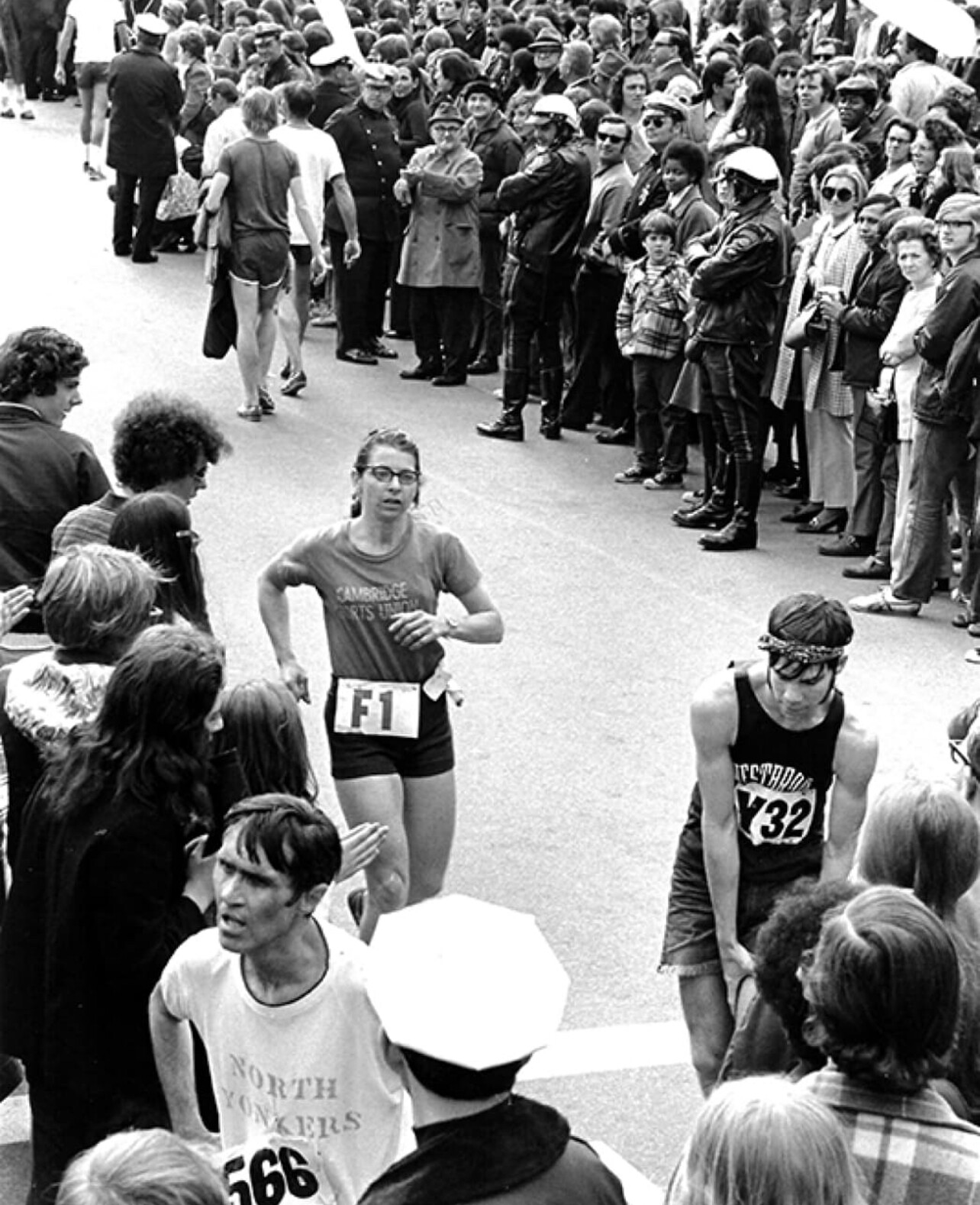
Sara Mae Berman was the first woman to cross the finish line at the Boston Marathon for three consecutive years from 1969 to 1971, during a time when women were still not officially recognized in the race. Her victories were instrumental in advocating for the official inclusion of women in the marathon, which was realized in 1972.
Uta Pippig (1994–1996)
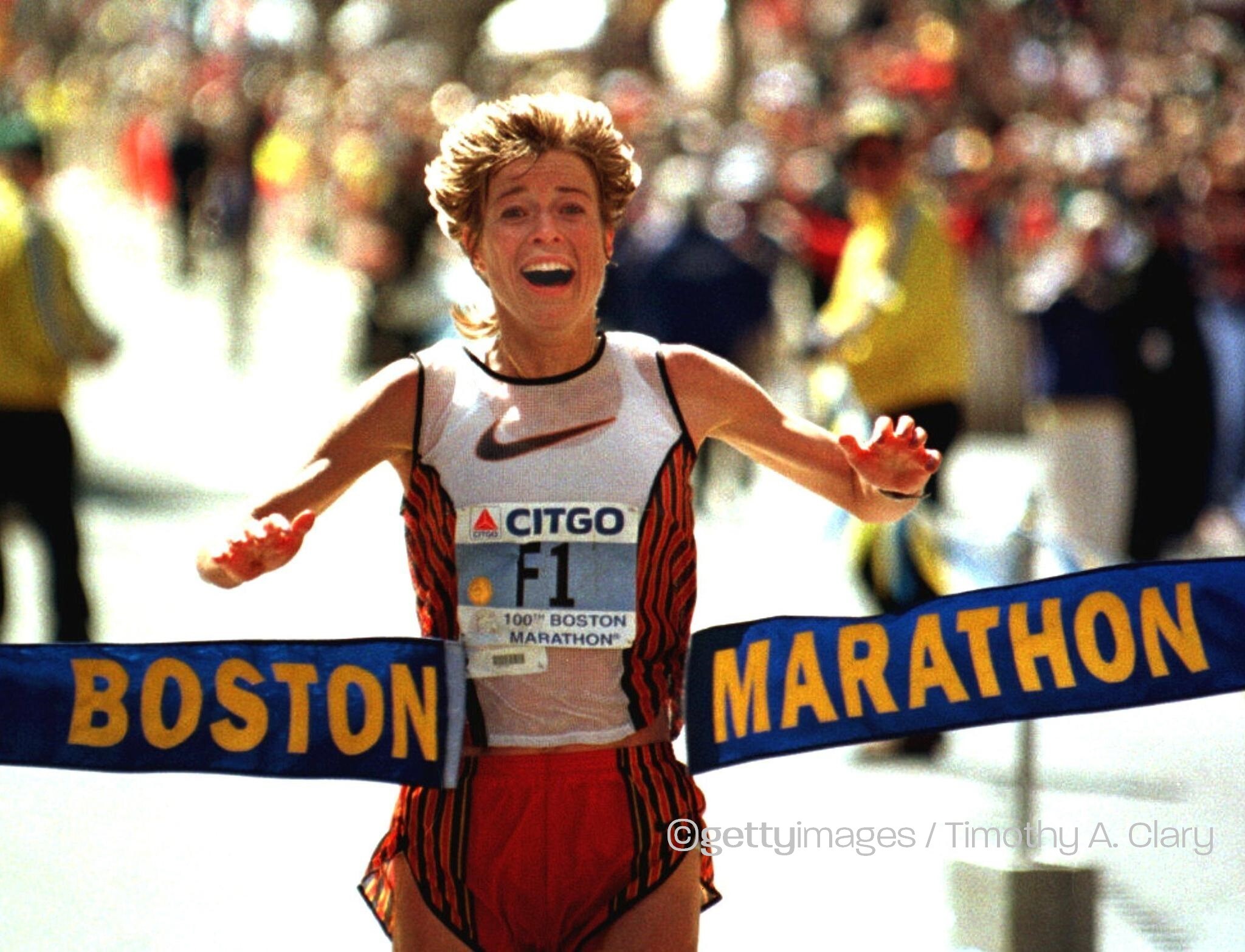
German runner Uta Pippig achieved three consecutive official victories at the Boston Marathon from 1994 to 1996. Her 1994 win set a then-course record of 2:21:45. Pippig’s 1996 victory was particularly notable as she overcame significant physical challenges during the race, demonstrating remarkable resilience and determination.
Fatuma Roba (1997–1999)
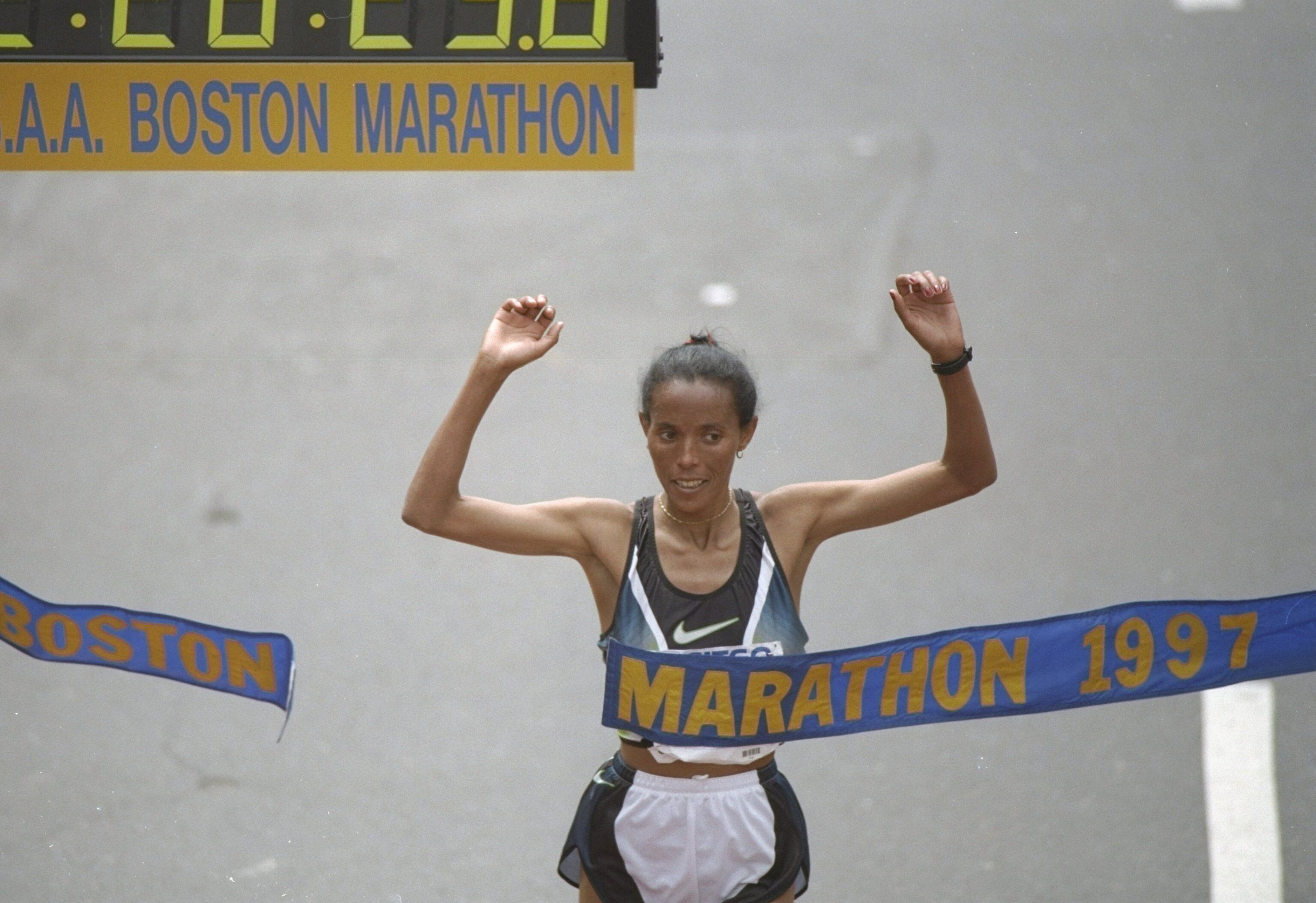
Ethiopia’s Fatuma Roba secured three consecutive Boston Marathon titles from 1997 to 1999, becoming the first African woman to win the event. Her victories followed her gold medal performance in the marathon at the 1996 Atlanta Olympics, solidifying her status as one of the premier long-distance runners of her time.
by Boris Baron
Login to leave a comment
Hellen Obiri of Kenya will return to the Boston Marathon in April and attempt to win for the third time in a row.
In the race’s history, only four other women (Bobbi Gibb, Sara Mae Berman, Uta Pippig, and Fatuma Roba) have won three times a row, according to race organizers, who released the elite field today. The race is set for April 21.
Last year, Obiri broke the race open by covering the 24th mile in 4:41 and won in 2:22:37, 8 seconds ahead of her countrywoman Sharon Lokedi, who will also return to Boston.
Obiri, 35, trains in Boulder, Colorado, with the On Athletics Club, and she has been on the podium in five of the six marathons she has run. In addition to her two Boston titles, she won the New York City Marathon in 2023, finished second there in 2024, and won the Olympic bronze medal in Paris. (The only blemish on her marathon record was her sixth-place finish at her debut in New York in 2022.)
Obiri and Lokedi will be challenged by Amane Beriso and Yalemzerf Yehualaw of Ethiopia. Beriso has a personal best of 2:14:58 from the Valencia Marathon in 2022. She’s currently the fifth-fastest woman of all time.
Sisay Lemma of Ethiopia, the defending men’s champion, will also return to Boston. Lemma’s 2:01:48 from Valencia in 2023 makes him the fourth-fastest man in history.
Last year in Boston, Lemma got out to a large early lead, and the course record seemed almost certain to fall. But by the Newton hills, Lemma was feeling his hot early pace and slowed considerably. He held on to win in 2:06:17.
His challengers at the 2025 race will include Evans Chebet of Kenya, who has won the race twice (2022 and 2023) and was third in 2024. John Korir of Kenya, who won the 2024 Chicago Marathon in a fast 2:02:44, will also be back to race in Boston. He was fourth last year.
A Strong American Field
Many top Americans are entered into Boston. On the women’s side, they include Keira D’Amato, who briefly held the American record of 2:19:12 in 2022, and Sara Hall, who had a strong race at last fall’s Berlin Marathon, where she ran 2:23:45. She’ll turn 42 the week before the race.
D’Amato told Runner’s World in a text message that she is recovering from the injury in her left foot—stress reactions in her calcaneus and talus—that caused her to drop out of Chicago. “Hoping all the cross training has made me Boston Strong,” she wrote. “I’m building up conservatively to have a killer 2025.”
Olympians Dakotah Popehn and Des Lindenwill run (Linden for the 12th time), as will Emma Bates, the top American at Boston last year, Olympic Marathon Trials fourth-place finisher Jess McClain, and notables Sara Vaughn, Kellyn Taylor, and Lindsay Flanagan.
On the men’s side, Olympians and training partners Conner Mantz and Clayton Young, who finished eighth and ninth at the Games, respectively, will run Boston. They’ll be joined by CJ Albertson, who runs several fast marathons each year (five in 2024, including his PR of 2:08:17 in Chicago) and Zach Panning, who was fifth at the Olympic Marathon Trials.
by Runner’s World
Login to leave a comment
Boston Marathon
Among the nation’s oldest athletic clubs, the B.A.A. was established in 1887, and, in 1896, more than half of the U.S. Olympic Team at the first modern games was composed of B.A.A. club members. The Olympic Games provided the inspiration for the first Boston Marathon, which culminated the B.A.A. Games on April 19, 1897. John J. McDermott emerged from a...
more...‘You Stole!’ Running World Divided Over ‘Bandits’ Who Crash Races
The Miami Marathon is contemplating facial-recognition tech to curtail interlopers; at a popular San Francisco race, bandits, who have included Gov. Gavin Newsom, are gods.
During the 2023 Miami Marathon, Frankie Ruiz, an event founder, spotted a bandit and pounced. He interrogated a runner wearing a comically bad counterfeit racing bib pinned to her shirt. She claimed she and pals had paid for entry to the race, and were told to print out their bibs at home.
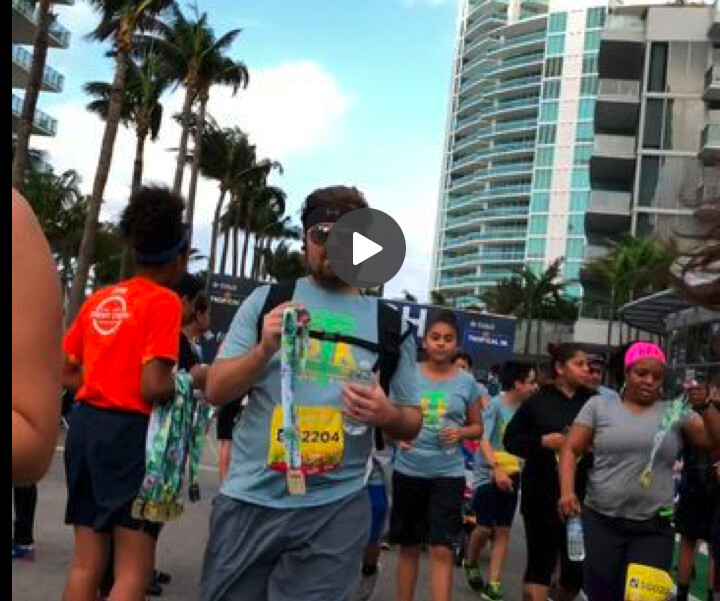
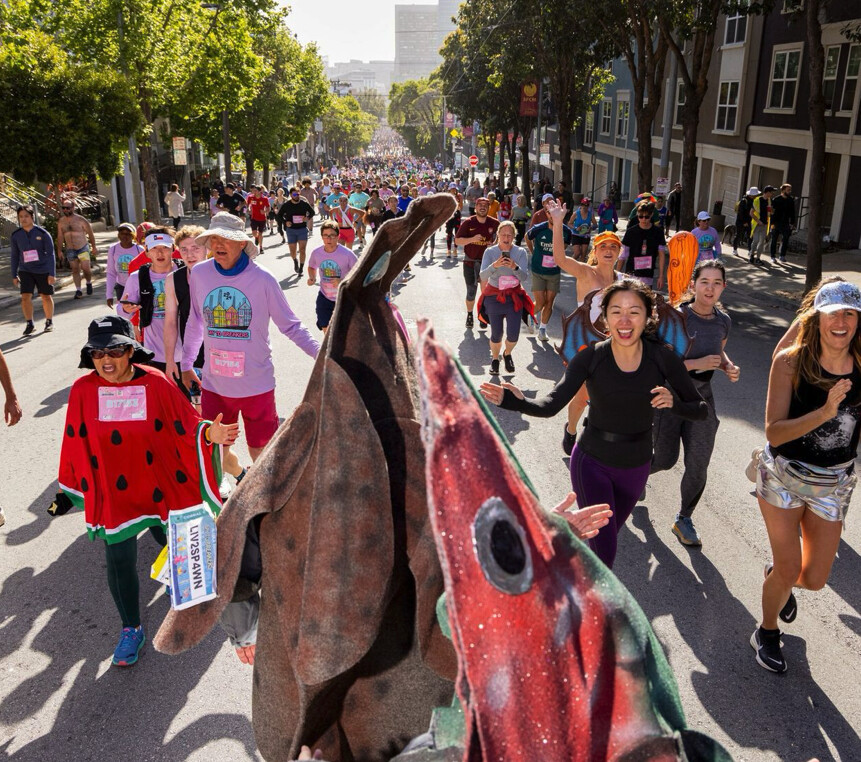
“Who did you give the money to?” Ruiz asked
“My friend,” the woman answered vaguely. “That’s not a friend,” Ruiz replied. “You’re not registered.” Her run was done. She left the course, just 300 meters from the finish line.
As the public face of the marathon’s surveillance group, aka the “bandit busters,” Ruiz posts videos of his team catching bandits—runners who crash events without signing up.
I n “bandit reel” videos, he’ll intercept interlopers or his crew will strip medals from bibless finishers. Excuses fly: “It fell off, bro, it fell off.” One man unzips his jacket, feigning surprise at the missing bib. Caught red-handed, many sheepishly surrender their medals without a word.
As running booms, some races burst at the seams. Sold-out events and increasing fees, which can top $150, spur some bandits to sneak in, while others simply see no harm in crashing the course.
Last month, influencer Alexa Curtis bandited a sold-out New York City race, like a party she wasn’t invited to.
“I just ran 13.1 miles for the Brooklyn half marathon at a 7.43 minute pace,” she humblebragged in a tearfully triumphant Instagram message, mentioning her “fearless” journey. “I didn’t sign up for this race. I just asked the security where it started and where it ended and jumped in.” She didn’t know what was about to hit her.
To critics, Curtis committed the cardinal bandit sin: crossing the finish line.
“You are a bandit and you stole from this race,” one commenter wrote. A defender retorted, “if there was a line that was marked as ‘finish line’ and she walked over it, that doesn’t cost anything to anyone.”
C urtis initially was confused. “I literally googled, ‘What is a bandit,’” she said in an interview.
In the running world, among peers and in online forums, the bandit debate rages like a nasty blister. Are bandits happy runners harmlessly enjoying public roads? Or narcissistic resource-hogs using up porta potties and guzzling ill-gotten Gatorade?
Race banditry has a rich history. Bobbi Gibb, the first woman to run the Boston Marathon, crashed it in 1966 when women couldn’t register.
Tolerance varies. The Miami Marathon, a qualifier for Boston and other prestige races, takes a hard line. But San Francisco’s anarchic Bay to Breakers 12k? That’s a different story altogether.
If race banditry had an Olympics, it would be this race. California Gov. Gavin Newsom bandited Bay to Breakers in 2010. Organizers reported 21,000 registered participants this year, but anticipated as many as 10,000 additional crashers.
‘The salmon’
“Bandits are a part of Bay to Breakers,” said race director Kyle Meyers. “Do they all finish? No.”
The most notable bandits are “the salmon,” die-hard mostly-unregistered runners who show up yearly, dress as salmon, and run in the wrong direction. This past Sunday, a dozen plunged into a crowd of about 30,000 participants, heading not to the finish line but to the Chieftain, an Irish pub near the start.
The lead runner, who gave his name as Uncle Milty, wore four old race bibs. “One of those was official,” he said when asked. “The rest were ones we made up.” As he waited to jump into the race, just a block from San Francisco’s famous Painted Ladies Victorians, he spied a fifth bib on the ground, and nonchalantly pinned it on.
After consulting with Michelle Kaye Fitzgerald, a legitimately registered salmon, to ensure the serious runners had passed, Milty rallied his school into Hayes Street. They approached advancing racers, shouting: “Spawn! Spawn! You’re going the wrong way!”
While Meyers says bandits shouldn’t cross the finish line, race staff happily handed cups of water to salmon along the course, and other amenities treasured by runners were open to bandits. “We probably have the most portable restrooms of any 12k on the planet,” Meyers said, with a hint of pride.
The salmon are the brainchild of Rob Schmitt, who hatched the idea more than 30 years ago after discussing salmon-spawning habits with his girlfriend. He repurposed old carpet into salmon costumes, and then relayed his plans to friends at the Cacophony Society, an underground group known for pranks and chaotic events.
To run with the salmon, as this reporter discovered Sunday, is to experience many things at once. Setting off downhill with some trepidation, you view thousands of participants, flowing toward you for block after block, like sparkly crawling ants, and feel an initial grim sense of awe at the thought of navigating through them. But that fades as passing racers greet you with glee.
You high-five 125 sweaty hands in a single block, including crabs, cows, bananas, banana slugs, furbys, Cybertrucks and nudists. You stop and dance every time there is music, especially if there are bubbles. You scream in mock terror when a bear runs by.
Meanwhile, in Miami
Frankie Ruiz began wrangling bandits a decade ago when the Miami Marathon ran out of medals for nearly 1,500 finishers, despite having ordered enough.
Ruiz is now known—and revered by some—for his bandit videos. He’s even nabbed bandits at Thanksgiving turkey trots. “I’ve had entire families showing up without paying.”
The Miami Marathon now uses holograms on bibs to prevent counterfeiting, and Ruiz is looking into facial-recognition technology.
What does he think of San Francisco’s salmon-suited bandits? “I’m glad you guys didn’t show up to my race,” he said. “I don’t know what I’d do.”
Login to leave a comment
Did You Know the Boston Athletic Association Has a Membership?
Joining isn’t as simple as you might think.
The 1983 Boston Marathon champion Greg Meyer is a member of the Boston Athletic Association (B.A.A.). So is Bobbi Gibb, women’s champion during the “pioneer era” of the marathon in 1966, ’67, and ’68.
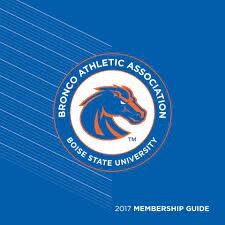
But Kathrine Switzer, who made headlines in Boston in 1967, is not. Nor is Meb Keflezighi, the 2014 champion.
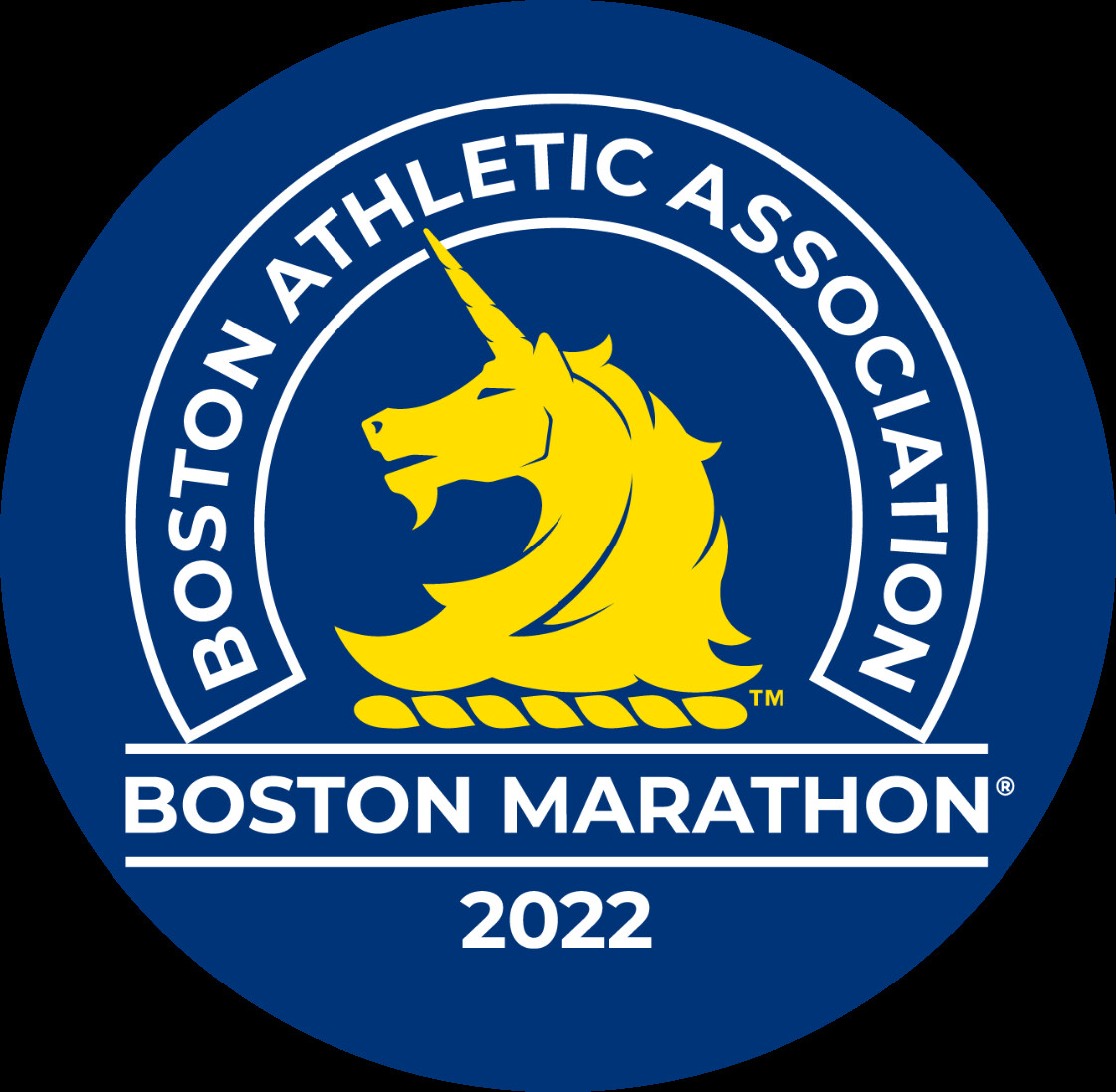
Tom Grilk, the CEO who retired in April, has been a member since 1987. The new CEO, Jack Fleming, is not.
Michael O’Leary, M.D., a surgeon at Brigham and Women’s Hospital and chairman of the B.A.A.’s Board of Governors (which is essentially the same as a board of directors) has been a member of the B.A.A. since 1989. All 13 Governors (10 men, three women) are members—they have to be, in order to be picked to serve on the board.
Scott Peterson, a Miami-area corporate finance professional, is a member, and he has his membership listed prominently on his LinkedIn profile. When asked by Runner’s World about it, Peterson, a marathon veteran, called the group “like-minded people who support the running community.” He said, “It’s a real honor for me and anyone to be part of the membership of B.A.A.”
But what is this selective group, exactly? Who are they? And how are they chosen?
A local mystery
Information about membership on the B.A.A. website is scant, which cloaks the group—intentionally or not—in secrecy. Several people who are deeply involved in the Boston-area running community told Runner’s World they did not know such a group existed. (There is also a B.A.A. Running Club, which is open to runners in the Boston area, but it is different from the membership.)
Chris Lotsbom, a B.A.A. spokesperson, answered multiple questions from Runner’s World about the membership via email. He said the group currently has 174 people.
He also explained that the membership model goes back to the B.A.A.’s founding in 1887. The marathon started 10 years later, in 1897.
The organization had, in its earliest days, a building with a pool, indoor track, bowling alley, and boxing room, among other amenities, like a golf club, for its dues-paying members. The B.A.A. was similar to other athletic clubs across the country, most notably the New York Athletic Club, which still exists.
In the 1930s, during the Great Depression, the B.A.A. lost its headquarters building and its other properties. All that remained was the marathon, the bylaws of the organization, and a small group of members.
The members kept the B.A.A. and the marathon going. And they remain to this day, written into the organization’s bylaws to promote “the common good and the health and welfare of the general public and the encouragement of the general public to improve their physical condition.”
Tom Derderian, executive producer of Boston: The Documentary and author of Boston Marathon: Year-by-Year Stories of the World’s Premier Running Event, takes a skeptical view of the leadership back in the day.
“The B.A.A. expected that their investments in the 1920s would continue to grow,” he wrote to Runner’s World. “The stock market crash and Depression and World War II removed all B.A.A. assets, leaving the Association with only its name, an indoor track meet, the Boston Marathon—and the founding attitude that only B.A.A. members could know what was best.”
The modern-day membership
Today, as with any group, some members are actively engaged in day-to-day matters of the organization, attending meetings, voting, lending expertise, or volunteering at B.A.A. events. Others are not involved at all.
“For us today, membership is a valuable asset when tapped into,” Fleming said in a call with Runner’s World. “There’s still work to be done, but leadership and staff rely on the members for a variety of things. They serve on committees. They provide guidance in areas, their expertise. So finance, real estate, of course, running, community, the professional side, technology.”
For example, when the B.A.A. wanted to buy a building in Hopkinton near the marathon starting line, the organization got real estate advice from some of the members during the process.
They have also helped with recent diversity initiatives.
“Several B.A.A. members were significant in the establishment of the Boston Running Collaborative, which seeks to increase the fitness and participation of minorities in running,” Lotsbom wrote. “In this respect, membership is a resource which complements the staff’s day-to-day work.”
The way the bylaws are written, the Board of Governors are nominated from the membership. So the 174 members influence the direction of the B.A.A. through the Governors, who oversee the CEO.
The B.A.A. doesn’t track the demographic makeup of the membership, but Lotsbom wrote that, since 2010, the group has attempted to improve its diversity.
Thaddeus Miles, who founded the Run to Wellness 5K in Roxbury several years ago, was invited to join the membership two years ago by Tom Grilk. Miles recently showed up at his first in-person membership meeting post-pandemic. He counted only one other Black member among what he estimates were 50 attendees, plus Adrienne Benton and Keith McDermott, who are on the Board of Governors.
Three people who are familiar with the membership said that many members work in the medical professions or financial services industry in the Boston area.
There is a family component as well, according to the B.A.A. O’Leary’s father, also a physician, was a member of the B.A.A. who was responsible for the physicals administered to marathon runners in Hopkinton during the race’s earlier years. A descendant of Walter Brown, who founded the Boston Celtics and was the B.A.A. president from 1941–64, still starts a division of the marathon to this day.
Members pay a nominal fee—$50—each year to belong. In exchange, they get one waiver each year into the marathon. They still have to pay the entry fee ($375), but they can run themselves without qualifying, transfer the waiver to a friend or family member, or donate the number to a charity.
Miles, who is on the steering committee of the Boston Running Collaborative, gives his waiver for a marathon entry every year to a runner of color who otherwise wouldn’t be able to qualify for the race.
For the thousands of runners every year who try to qualify but fail, or who fundraise for one of the charity teams as a way of gaining entry to Boston, the existence of a small membership group might rankle. Lotsbom said fewer than 180 entries are allocated for members annually (out of a field size of 30,000) and less than half are ultimately used.
“The B.A.A. gets to choose whom they want to invite to run the race, and the B.A.A. decides the terms by which it will invite people to participate in its iconic annual event,” said Robert Wang, the founder of the World Marathon Majors Challenge group on Facebook. (The group’s 18,000 runners are seeking to run all six of the Abbott World Marathon Majors, but they have no official affiliation with that organization.)
“If the B.A.A. wanted to invite everyone whose last name starts with ‘Y’ to run the Boston Marathon, that would absolutely be the organization’s prerogative,” Wang said.
I’d love to be a member. How do I sign up?
There’s the rub. Right now, no such sign-up mechanism exists. You have to know a current member or someone on the Board of Governors.
“Potential members are traditionally nominated by a board member or another current member, and apply with a résumé along with specific comments as to why they wish to join the B.A.A.,” Lotsbom wrote. “From there, the nominees are seconded by a Governor, and voted on by the board. The membership is made up of those who have expressed an interest in the B.A.A., B.A.A. activities, and its mission.”
Fleming acknowledged that the relative obscurity of the membership and the lack of clear guidelines for becoming a member could be improved.
“We should make it known more,” he said. “And we should have more public ways of making it easier to have their interest become known. Raise your hand. We should make it easier for that to occur.”
In an era when running’s leaders are trying to make the sport more inclusive, how does the B.A.A.’s membership fit into the landscape? Is it a quirky echo of the organization’s past? Or an impediment to diversity in today’s world? Does a quiet group of invitation-only members pass the sniff test in 2022?
Tiffany Chenault, a sociology professor at Salem State University who is an ambassador for the Boston chapter of Black Girls Run and part of the Boston Running Collaborative, said in a call that she didn’t recall hearing about the membership, and she wondered how much influence the group holds.
“I’m curious,” she said. “I have questions.”
John Hanc, a longtime Runner’s World contributing editor and author of The B.A.A. at 125: The Official History of the Boston Athletic Association 1887-2012, knew of the group’s role in the B.A.A.’s founding, but he didn’t realize it still existed.
“Today we know the B.A.A. for the marathon and its other major running events,” Hanc said.
“But we have to remember that its history is rooted in the 19th century. Back then, it was very much an athletic club, with all of the exclusivity and, by 21st century standards, perhaps unnecessary and stuffy protocol that came with institutions like it at the time. Over the decades, the organization has morphed into a powerful force in the modern running movement. But some vestiges of that past still remain. While we of course want to see greater diversity in every aspect of the sport, this remnant of the old B.A.A. strikes me as fairly harmless.”
The B.A.A. in 2022 is facing very modern challenges, however. John Hancock, the longtime marathon sponsor, announced that 2023 would be its final year. Will a company want to replace Hancock? And critics have said the B.A.A. has been slow to embrace diversity in its ranks and events. Where does the membership group fit into that?
Does a leadership structure that evolved from the 19th century, and with a Board derived from a membership group, still serve the organization?
Derderian isn’t certain.
“It is a human tendency for those in charge to conclude that only they know enough to be in charge, since they have always been in charge,” he wrote, “and to keep things from changing, they have to continue to exclude control from outside.”
by Runner’s World
Login to leave a comment
50 years later, Val Rogosheske is back to run the Boston Marathon once again
Val Rogosheske started running because of a simple question from a friend: “How fast can you run a mile?”
Being a physical education major, she assumed it wouldn’t be a problem — after all, she was in school learning about physical education, and running a mile is a staple of physical education.
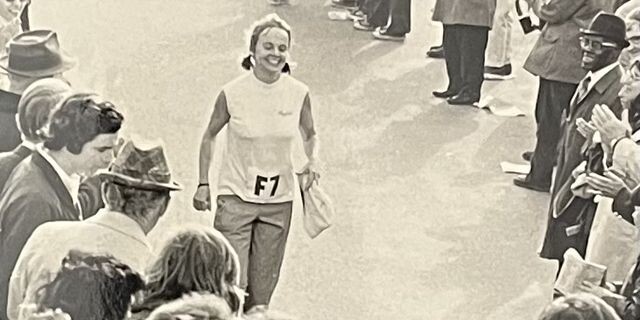
But that turned out not to be the case.
“I was just about to graduate and a friend asked me how fast I could run a mile. I thought, ‘Well, that’s an interesting question. I’ve never run a mile. Or I’ve never timed myself,’” Rogosheske said. “So I went to a track to get a time, and I was not able to finish a whole mile running. I was so embarrassed.”
Fast forward a few years, and suddenly the Minnesota native was one of the first eight women to run the Boston Marathon as an official participant.
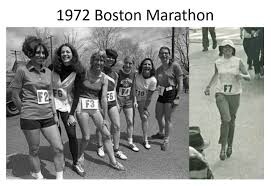
“It was so exciting. They put all eight of us on the start line, off to the side. And so that was the first time I met the other seven women,” Rogosheske said in an interview with Boston.com. “It was so exciting just to be together there and knowing that this was a big deal to be there for the first time legally.”
That historic race took place 50 years ago, in 1972. It was the first time the marathon had officially let women compete.
Rogosheske’s path to running the Boston Marathon wasn’t what one might expect.
Though she now thinks her inability to finish a mile while in college was more of a pacing problem than a physical fitness problem, the embarrassment she felt pushed her to start running.
“I got that book by Bill Bowerman called ‘Jogging.’ Read that and just started going out — I don’t know if it was every day, maybe several times a week — and just started jogging,” Rogosheske said.
In about a year, Rogosheske went from barely running a mile to competing in the Boston Marathon. Her husband-to-be at the time, a lifelong athlete and coach, helped her get over the hurdles that come with starting a new sport.
“I was once in a while having a little bit of trouble getting out the door to do my jogging, and [my husband] said, ‘What you need is a goal,’” Rogosheske said.
At that time, they were living in Alexandria, Virginia, because he was finishing up a stint in the army.
“We were out [in Virginia], and I thought, ‘Well, that’s a good idea.’ But the only race I had heard of was the Boston Marathon, but I had read about women hiding in the bushes and then jumping out and running it, and I thought, ‘This sounds like a good thing to do,’” Rogosheske said. “That’s when I started doing more and more miles and getting ready actually for a marathon.”
In 1966 Bobbi Gibb made history as the first woman to unofficially run the Boston Marathon. At the time, she was told women were “not physiologically able to run a marathon,” and wasn’t allowed to officially run the race. She took matters into her own hands, hid in a forsythia bush near the start, and joined the crowd after half the men had started running.
Six years later, the Boston Marathon officially welcomed women to compete in the race — the first year had a field of eight women, including Rogosheske.
With her goal of running the Boston Marathon in mind, Rogosheske’s husband hooked her up with some reading material and advice from friends who had marathon experience. Then she was, quite literally, off to the races. Rogosheske finished sixth in her category in her first marathon, with a time of 4:29:32.
“In 1972, I was not very well ready,” Rogosheske said. “We had just gotten married in December, and then I got mono and was in bed for the whole month of January. So that left only February March to train for the marathon. I finished it feeling like you know I could do better.”
Rogosheske came back in 1973 and 1974, eager to improve on her original time — a feat made easier by not having mono before the other two races. Her personal best came in 1974 with a time of 3:09:38.
Though at the time she realized it was exciting to be one of the original eight female runners, Rogosheske said after the starting line she never saw them again, so it didn’t stand out as much.
“I think the most exciting part then was passing Wellesley College … And the women came out there yelling, ‘Right on, sister,’ it just felt so good,” Rogosheske said.
Wellesley College has been a highlight for Rogosheske at several marathons. When she came back for the 25th anniversary in 1997, she was dealing with some knee problems, so she didn’t run the entire race but made sure she made it about halfway through, when the course passed through Wellesley.
“When I came back 25 years later, I made sure I did not drop out before Wellesley, “Rogosheske said. “So then when I went to Wellesley, they all looked like my daughters instead of my sisters, and now this year, I’m kind of looking forward to just going by there again, and looking at them and feeling like ‘Wow, they can all be my granddaughters.’”
Though she couldn’t finish the race for the 25th anniversary, she was really there for the experience. The same is true now — she’s still looking forward to the experience and festivities — but this year, she also plans to finish the race.
“I’m just excited to be back in that atmosphere,” Rogosheske said. “Just to compare, I mean, 50 years ago, there were 1,200 total runners, I believe. And that seemed like a huge number. … And now, this year, I believe there’s going to be over 30,000, 14,000 of which will be women. So what a change in 50 years to go from eight to 14,000.”
Rogosheske, who is 75 years old, is running this year’s Boston Marathon as a part of the honorary women’s team. She will be running along with seven other women who have made powerful impacts in everything from athletics to human rights, according to the B.A.A.
“I’m just so honored to be on this team because these other women have just done so much in so many ways for women, in very practical, really heartfelt ways,” Rogosheske said.
About 50 years after she first took to the starting line of the Boston Marathon, Rogosheske will cross that momentous line again, this time with her girls and another 14,000 women by her side.
“I’ve really been seriously getting ready for this, but I won’t be racing in the traditional sense,” Rogosheske said. “I’m just going to be trying to finish with lots of enjoyment.”
by Martha Hill
Login to leave a comment
Boston Marathon
Among the nation’s oldest athletic clubs, the B.A.A. was established in 1887, and, in 1896, more than half of the U.S. Olympic Team at the first modern games was composed of B.A.A. club members. The Olympic Games provided the inspiration for the first Boston Marathon, which culminated the B.A.A. Games on April 19, 1897. John J. McDermott emerged from a...
more...Bobbi Gibb’s entry was not accepted but Fifty Two years Later over 12,000 woman will be running
Login to leave a comment
When I first saw the Boston Marathon in 1964 I fell in Love and I ran it in 1966
Login to leave a comment


